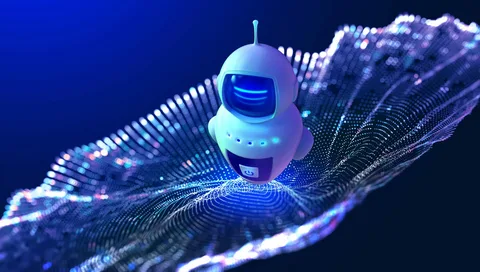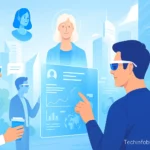How we design, see, and engage with digital media is changing as flat, two-dimensional images become immersive, three-dimensional experiences. Image to 3D technology—a swiftly developing discipline allowing artists to transform basic pictures or sketches into vibrant 3D models—is at the core of this change. Opening the door to totally new processes across sectors including entertainment, education, architecture, and product design, this invention is shattering conventional creative restrictions.
A New Era of Digital Expression
Image to 3D tools have brought in a new age of digital expression. Artists and designers once depended on manual sculpting or modeling software that demanded hours of labor; now they can produce lifelike 3D assets in minutes. This is especially helpful in idea development, where concepts must rapidly go from vision to reality.
By transforming static images into fully interactive models, image to 3D technology helps artists bridge imagination and digital reality. These systems let artists cycle more quickly and more freely, without being slowed down by technical constraints, whether it’s a creature design, a fashion prototype, or an architectural sketch.
Creative Empowerment Across Industries
The impact of image to 3D conversion extends well beyond traditional art and design. In architecture, for example, a single drawing or photograph of a building can be turned into a 3D model to explore space, lighting, and structural feasibility. Architects can start with a picture and quickly produce digital models to test ideas and distribute them to customers instead of only depending on manual CAD modeling.
Image to 3D pipelines are employed in movies and video games to build realistic environments and richly nuanced characters. Often starting with storyboard sketches or concept art, set designers and VFX artists Turning these into three-dimensional models enables production to be expedited and boosts interdepartmental cooperation. Employing only conventional processes would make this degree of integration almost impossible.
Education and Training Become More Immersive
Image to 3D technology is also revolutionizing education and training. In classrooms, textbooks are being augmented with interactive 3D models generated from simple diagrams or photographs. Science teachers can bring abstract concepts like molecular structures or human anatomy to life, making them easier to understand and more engaging for students.
Medical and technical training programs benefit as well. Students can study virtual reconstructions of organs, tools, or machines, created from image to 3D systems using real-world data. These models can be manipulated and explored in virtual environments, enhancing comprehension and hands-on learning—even when physical access to materials is limited.
From Shopping to Simulation: Real-World Applications
Another sector witnessing a quick growth in image to 3D adoption is e-commerce. Using augmented reality, online merchants can transform product photos into interactive 3D models that consumers may rotate, zoom in on, or view inside their own homes. This lowers uncertainty and boosts satisfaction by making internet purchasing more interesting and educational.
Image to 3D is absolutely essential in simulation and digital twin technology. For instance, city planners can build three-dimensional models of urban surroundings using aerial or street-level photographs. All from their desk, these digital copies allow one to simulate traffic patterns, infrastructure requirements, and environmental effects.
Making Complicated Creative Projects Easier
The way picture to 3D conversion streamlines difficult creative projects is among its main advantages. Making a complex object or scene might be daunting for someone who lacks a 3D modeling background. By enabling consumers to begin with what they already have—an image, a sketch, or a photograph—image to 3D systems lower the entry hurdles.
From flat photographs, these systems frequently employ artificial intelligence and machine learning to deduce depth, texture, and viewpoint. The outcome is one that may be further textured, animated, and polished—not only a simple 3D object. The difference between theory and practice keeps narrowing as these technologies develop.
Looking Towards the Future
Creative possibilities of image to 3D tools rise as their accessibility increases. We’re at a point where anyone with a smartphone camera and an idea may create 3D material, disseminate it across channels, and even incorporate it into virtual or augmented reality settings. This democratization of 3D material creation will radically alter our view of storytelling, design, and communication.
Real-time image to 3D rendering, when viewers can watch their works materialize as they snap photographs or draw on a tablet, will likely be a feature of future advancements. This sort of interaction will reinvent inventiveness and originality, speeding it, making it more natural, and more inclusive.
Final Thoughts: Redesigning Creativity
Image to 3D technology symbolizes more than just a technical improvement; it signals a change in our creative vision, creation, and sharing. The creative possibilities are endless whether you’re an artist converting sketches into virtual sculptures or a company imagining items in three dimensions from catalog photos. Image to 3D capabilities are eliminating the border between flat images and spatial reality, therefore enabling anybody to explore new levels of artistic expression.



